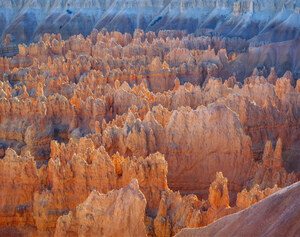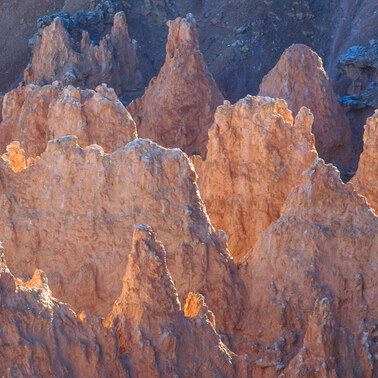
Sunset Point, Bryce Canyon National Park, Utah
Bryce Canyon National Park is a part of the eastern edge of a plateau, not a canyon. On part of the western edge, Cedar Breaks National Monument reveals formations very similar to most of those at Bryce. The altitude of Bryce is a little over 8,000 feet at the rim, and Cedar Breaks is about 10,000 feet at the rim. Each feels much the same as the Sierra Nevada at the same altitudes. On one visit to Bryce, I encountered the San Francisco Sidewalk Astronomers with their group of good-sized, portable, reflector telescopes, which they use primarily for the edification of visitors with regard to celestial phenomena. I had seen them a few years earlier at Tuolumne Meadows, in Yosemite. There are very few places where the public often encounters conditions favorable to astronomical observation. The air must be very clean, the altitude preferably high, the night sky free of light pollution from settlements, and of course there had better not be too many clouds. Certain of the National Parks are therefore very good. This public-spirited educational effort is an ideal complement to the National Parks, where people come to see the works of nature. The power of the sight of the rings of Saturn or the heart of the Andromeda Galaxy is significant. Suddenly things which had seemed imaginary and quite beyond one's existence become very real, as one learns what is right over one's head.

